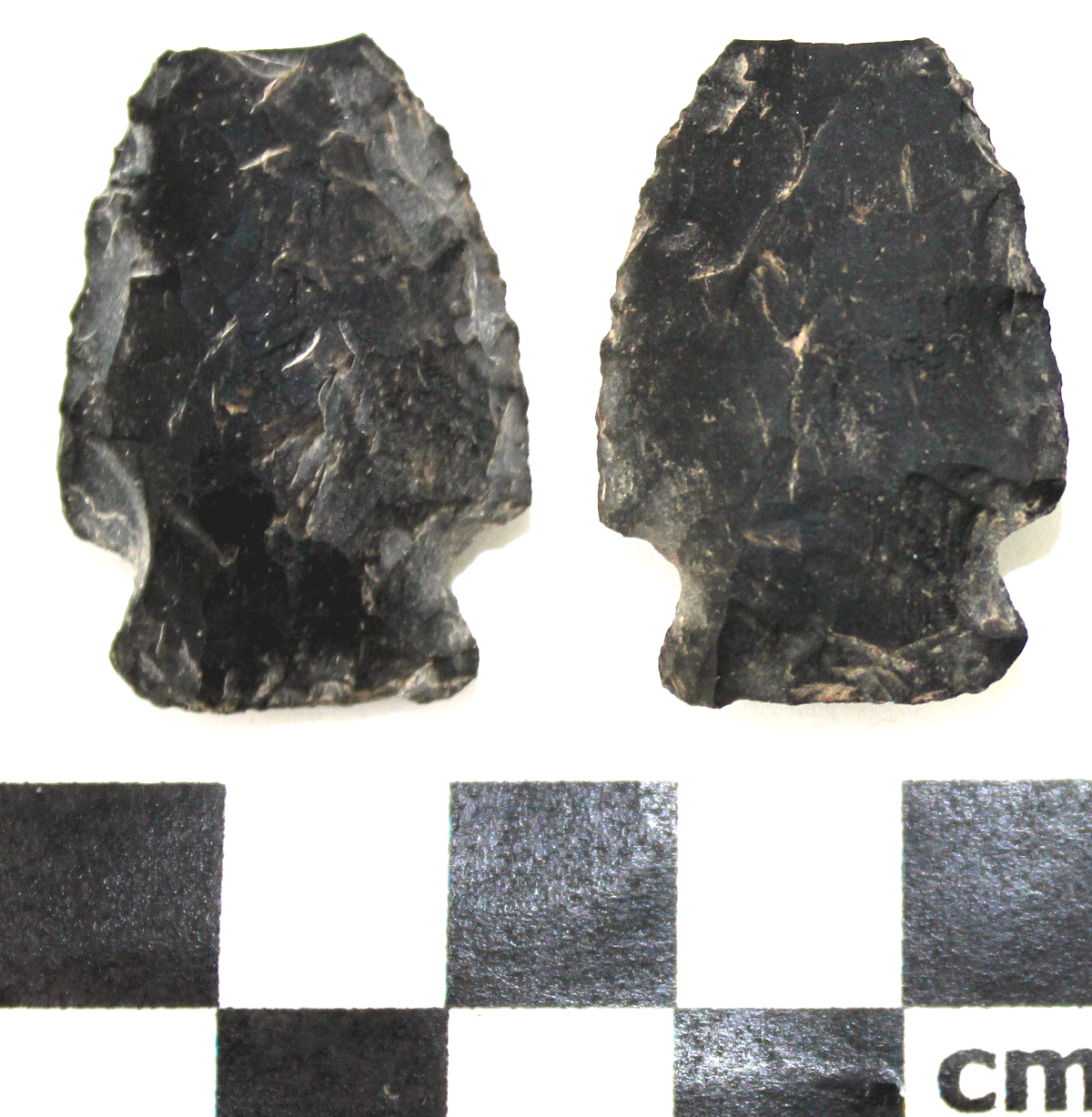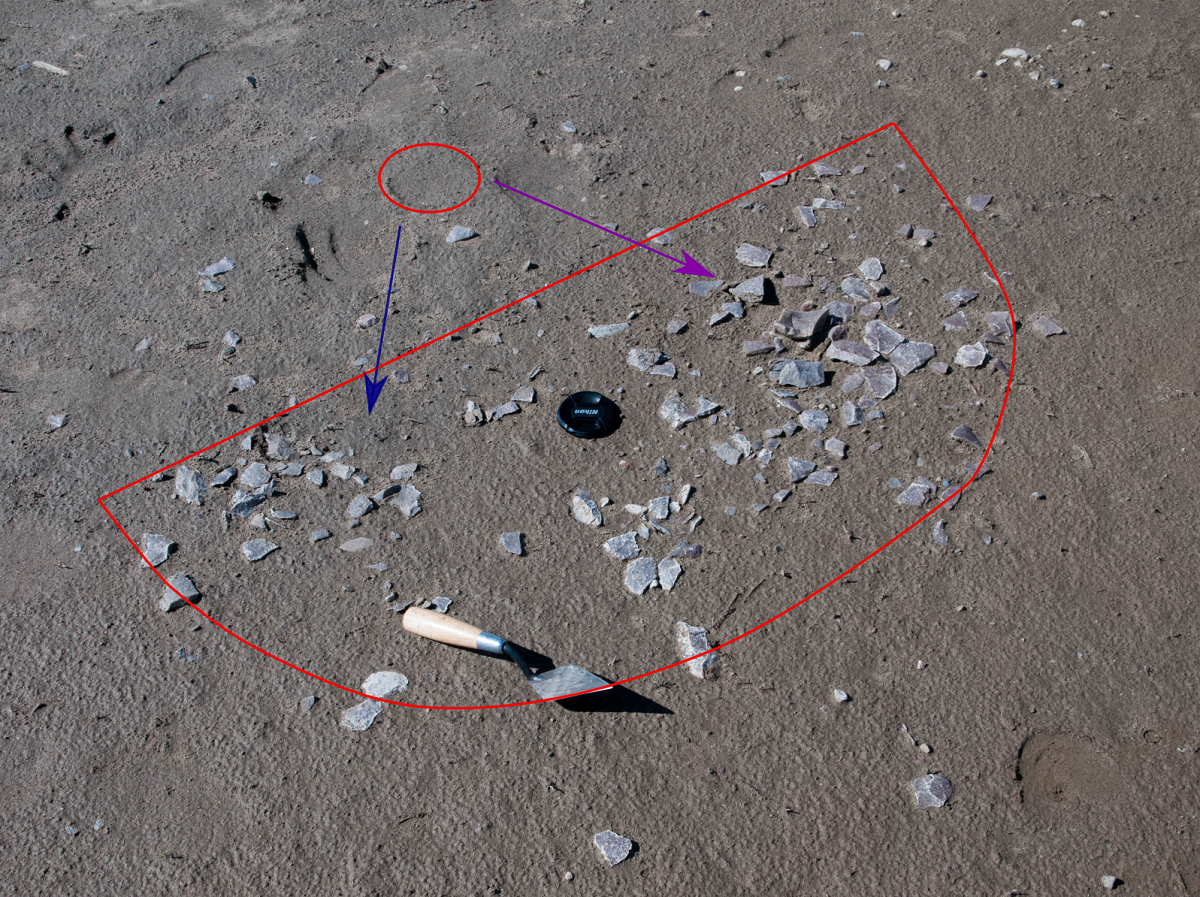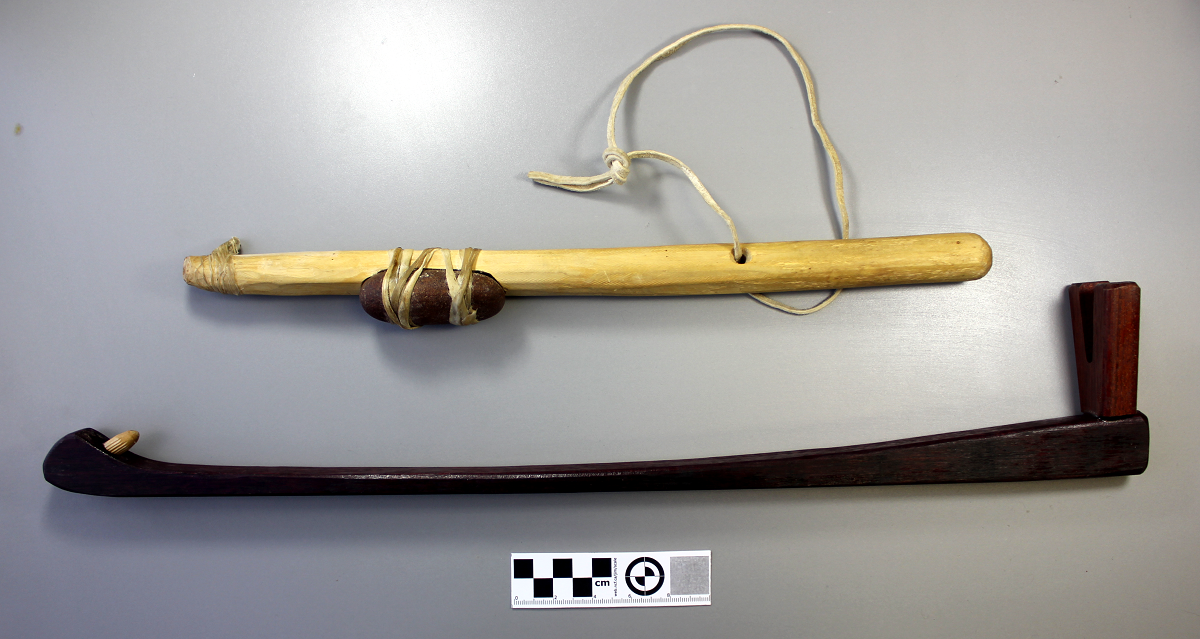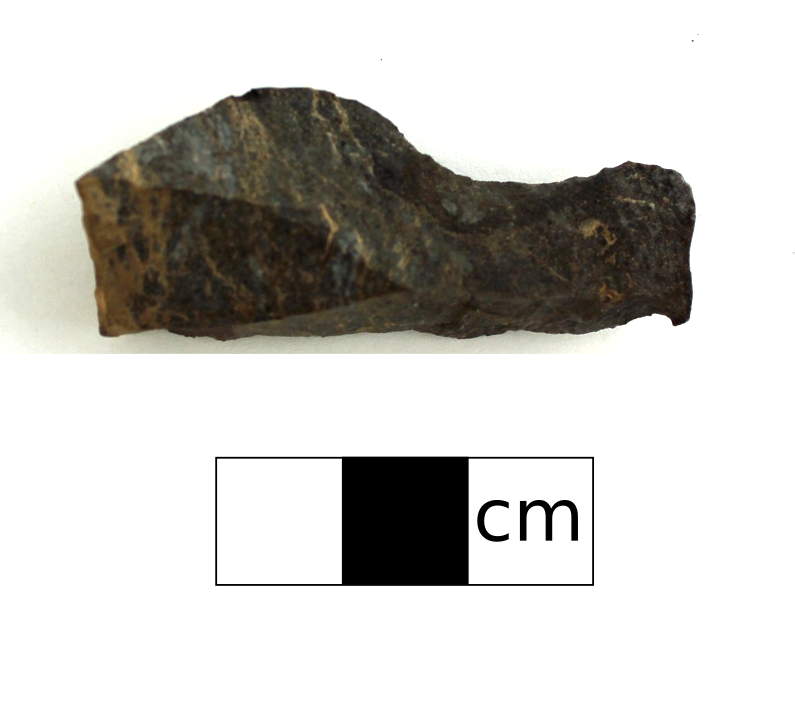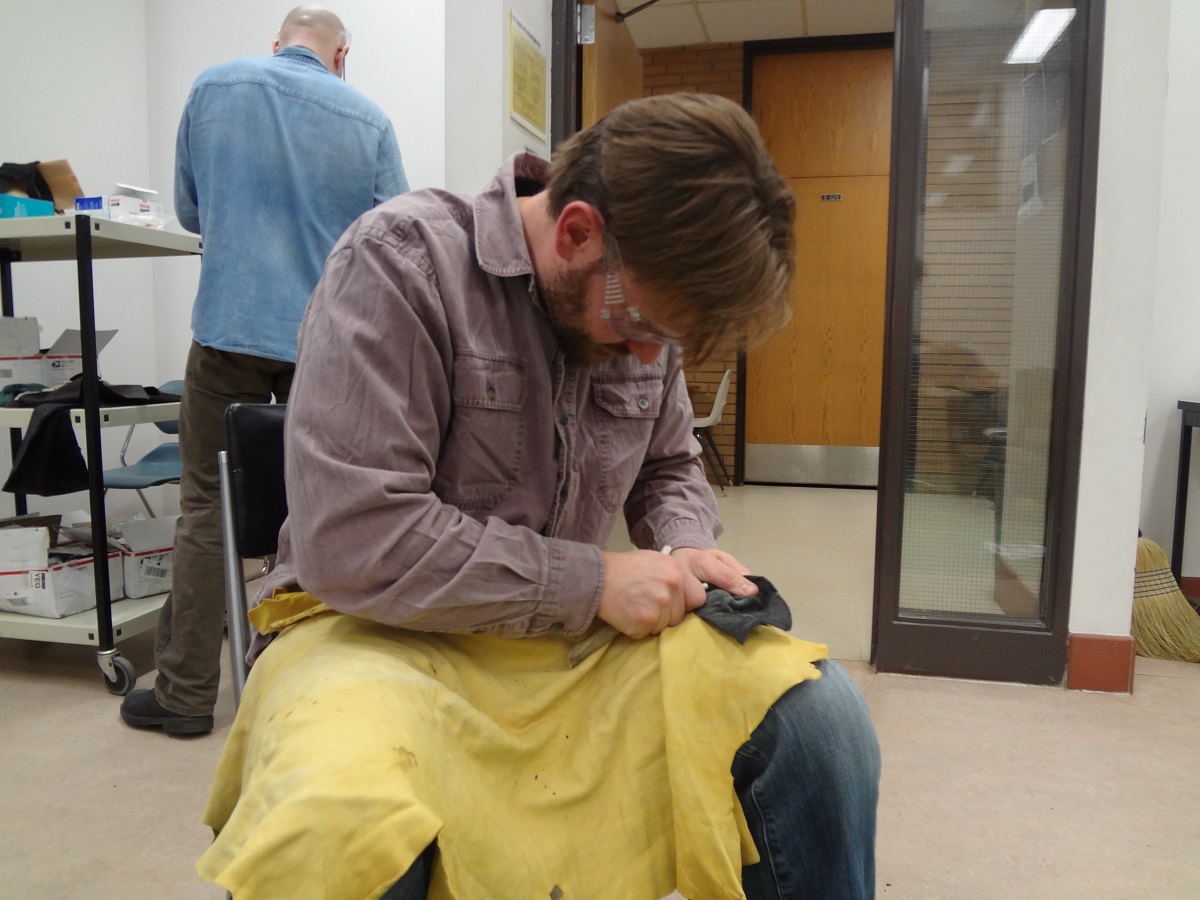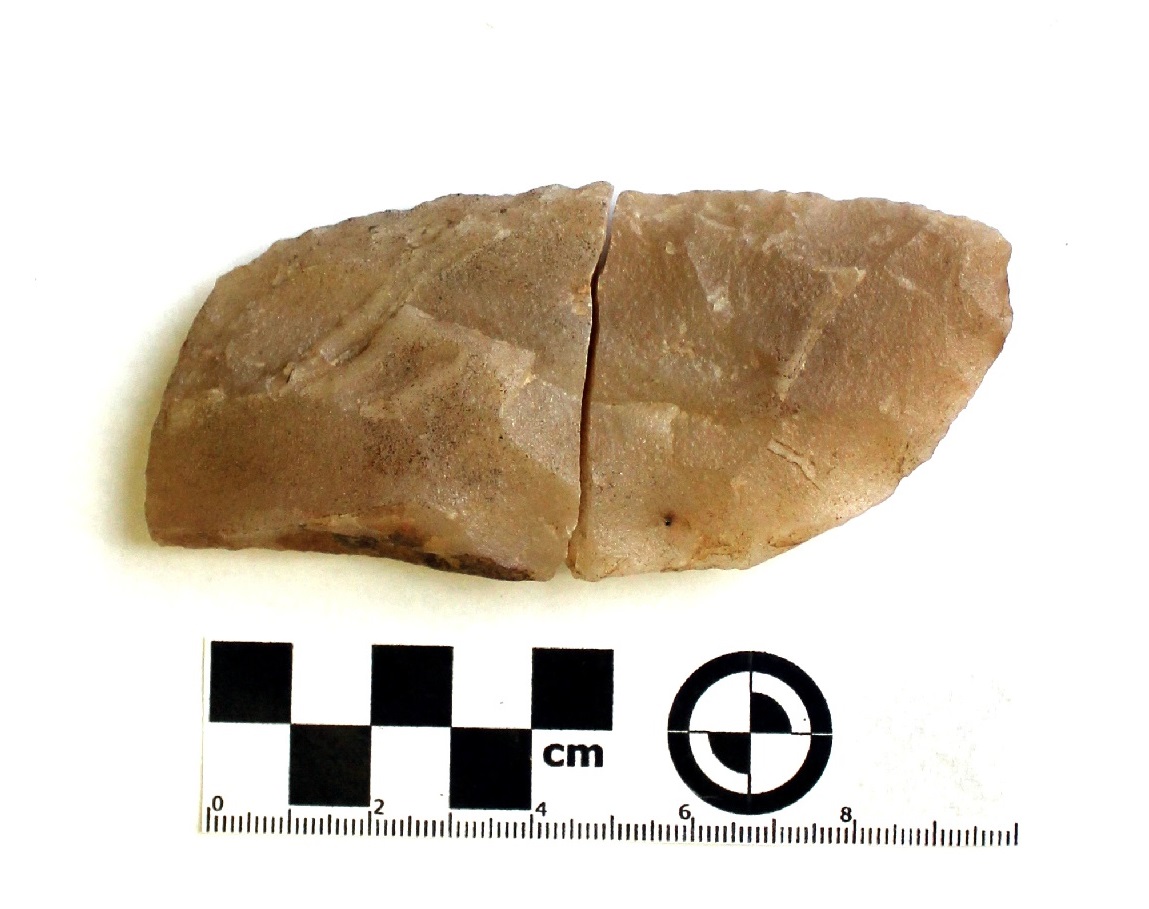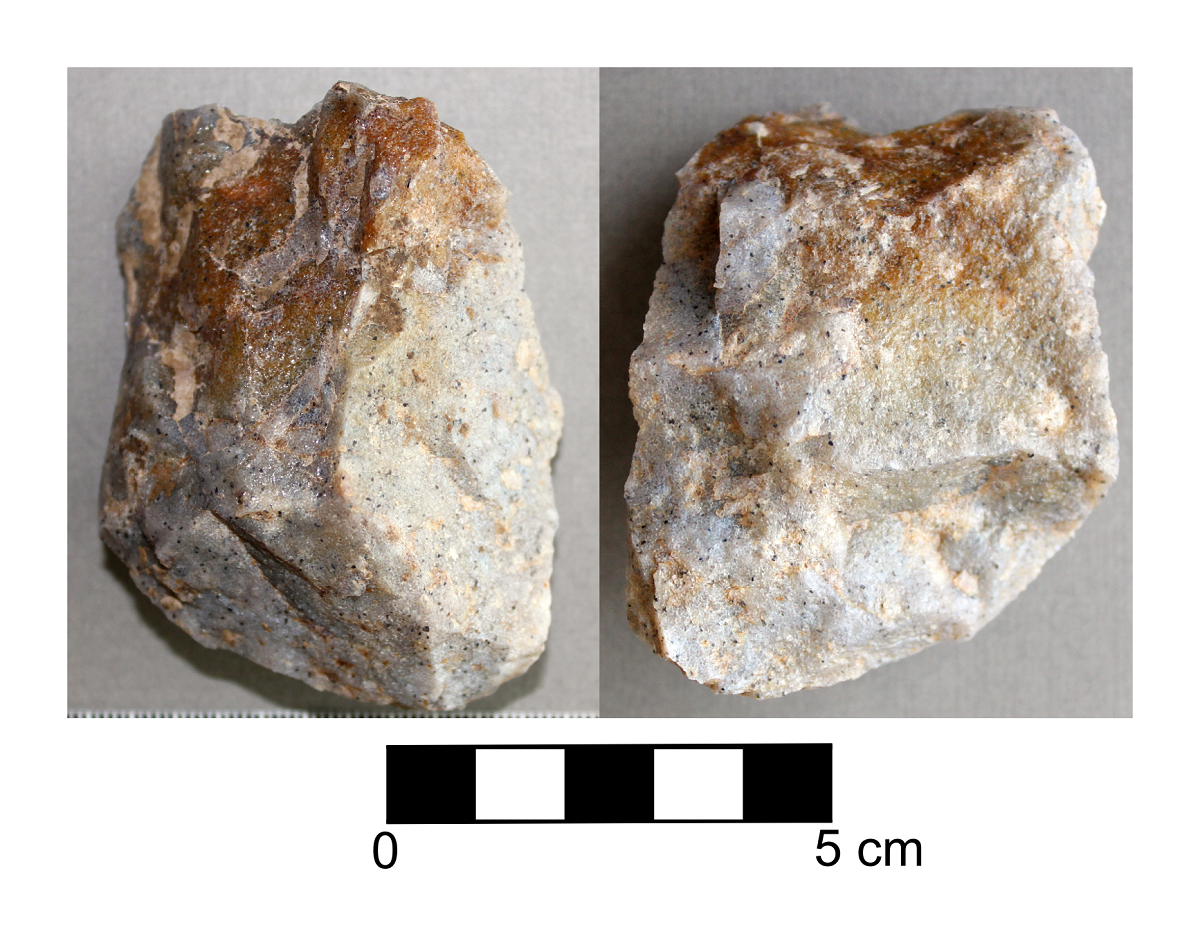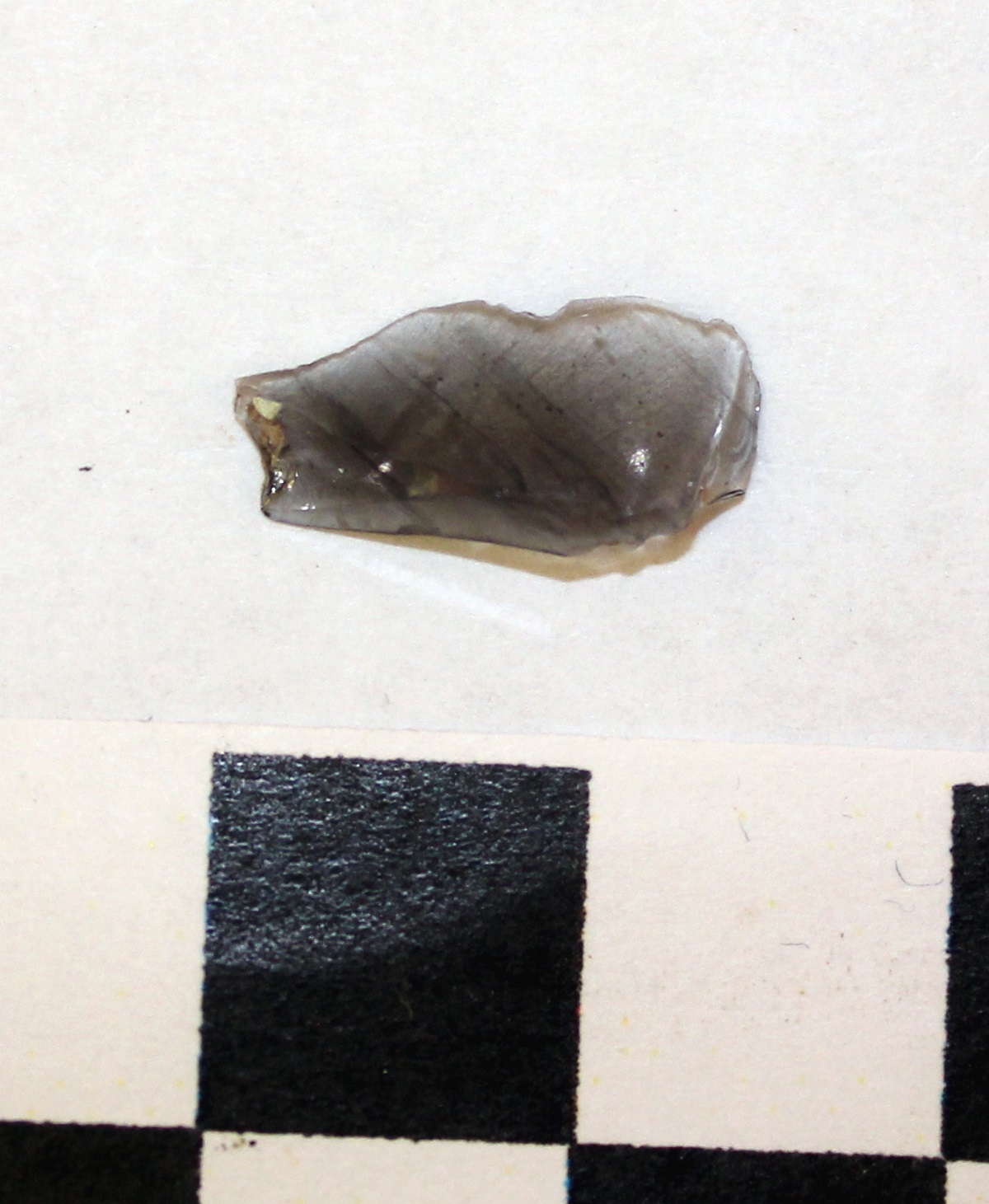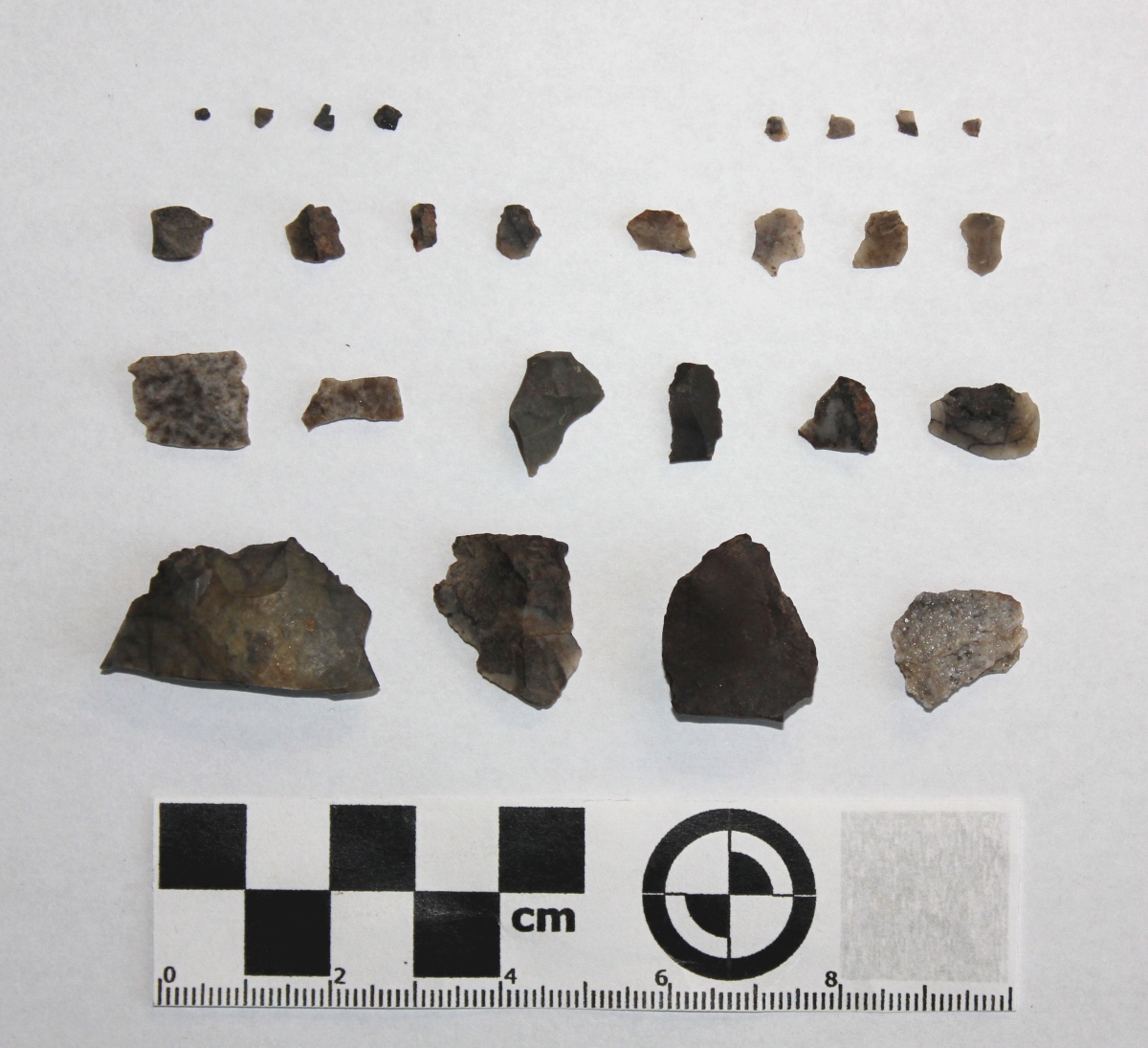Projectile points come in many shapes and sizes ranging from large paleolithic spear points to small protohistoric arrow heads to even smaller “toy arrow heads”. This artifact type is a stone that has been shaped using flint knapping techniques to create a sharp triangular and aerodynamic tip that is attached to a wooden shaft that can be propelled through the air by throwing by hand, atlatl, or bow, to hunt game. This is an important artifact type as over time the styles of points changed allowing us to use the style to estimate the time period a site was occupied. This particular point is a Besant style dart point, which dates to approximately 2,500 -1,350 BP.
Tag: stone tool
Context
The context of an artifact is extremely important to archaeologists. The context of an artifact means the precise location of the artifact and it’s association with other artifacts and landscape features. This helps us determine such things as the relationships between artifacts on a site, it’s position in time and space, and even how it is related to different archaeological sites.
Below is a picture from a site near the Brazeau Reservoir, Alberta. The lithic scatter pictured below shows the flakes in their original context. The whole scatter is in a semi circle shape outlined in red. The positions of the flakes indicate that someone likely sat near the red circle. They then flint knapped purple quartzite which went in the direction of the purple arrow. They then shifted their body and began to flint knap a grey-blue quartzite that went in the direction of the blue arrow.
This is just a small portion of the site, so when we start to put together this information with other information about the site we begin to get a greater understanding of what happened, such as where specific activities took place and even what was going on in the area at that time.
Atlatl
An atlatl is a throwing stick with a small hook used to throw darts (projectiles). It allowed the hunter or warrior to create more leverage to increase the speed and distance of the dart. This weapon was used throughout North America including Alberta, approximately between 7,500 and 1,350 B.P.
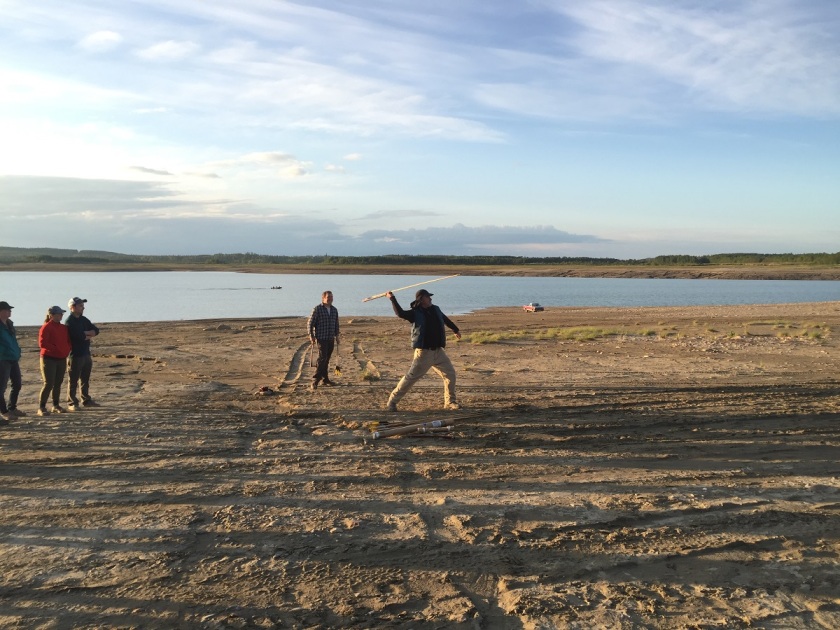
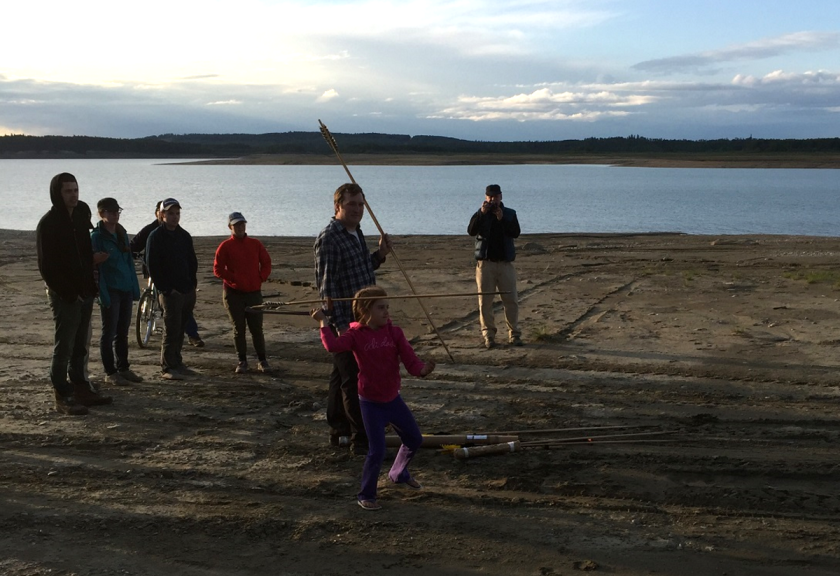
Spokeshave
A spokeshave is a type of formed tool that was used to scrape and/or smooth wooden shafts or handles such as on spears, darts and arrows. It is typically identified by the inward curving edge. This edge typically has small flakes removed from use or from shaping it into the curve prior to use.
Knapping / Flintknapping
The process of creating stone tools through lithic reduction (by removing stone chips). A hammer (such as a stone or antler) is used to strike the core rock in order to remove smaller pieces. The core is either shaped into a specific tool, like a biface, or the flakes that have been taken off are used or shaped into something specific, like a projectile point.
Biface
A biface is a stone tool that has flakes removed from both sides. It can be used as a knife, scraper, or further worked into a more recognizable tool. The typical biface shape is an oval with slightly pointed ends. The biface on the left was found near Fort Vermilion in 2016.
Public Archaeology at the Brazeau Reservoir
Public archaeological programs are an excellent opportunity for people with a general interest in archaeology or amateur archaeologists to learn what an artifact is, and to practice the techniques that are used to find and interpret them. Often these programs will have a dig component, where people join for a few days or a week, and learn excavation techniques in units laid out over a buried site.
The Brazeau Archaeological Project (BAP), sponsored in part by Tree Time Services Inc., provides a unique experience. The current sites being surveyed are almost entirely exposed by the continuously fluctuating water levels of the reservoir. This also means that the entire history of the area has been deflated to one level, rather than multiple occupation levels that can be apparent in excavations. The occupation of the Brazeau River by First Nations extends as far back as 12- 14,000 years ago. This allows participants to gain a better feel of how large and spread out an archaeological site can really be. The largest site surveyed so far spans almost 1 km!
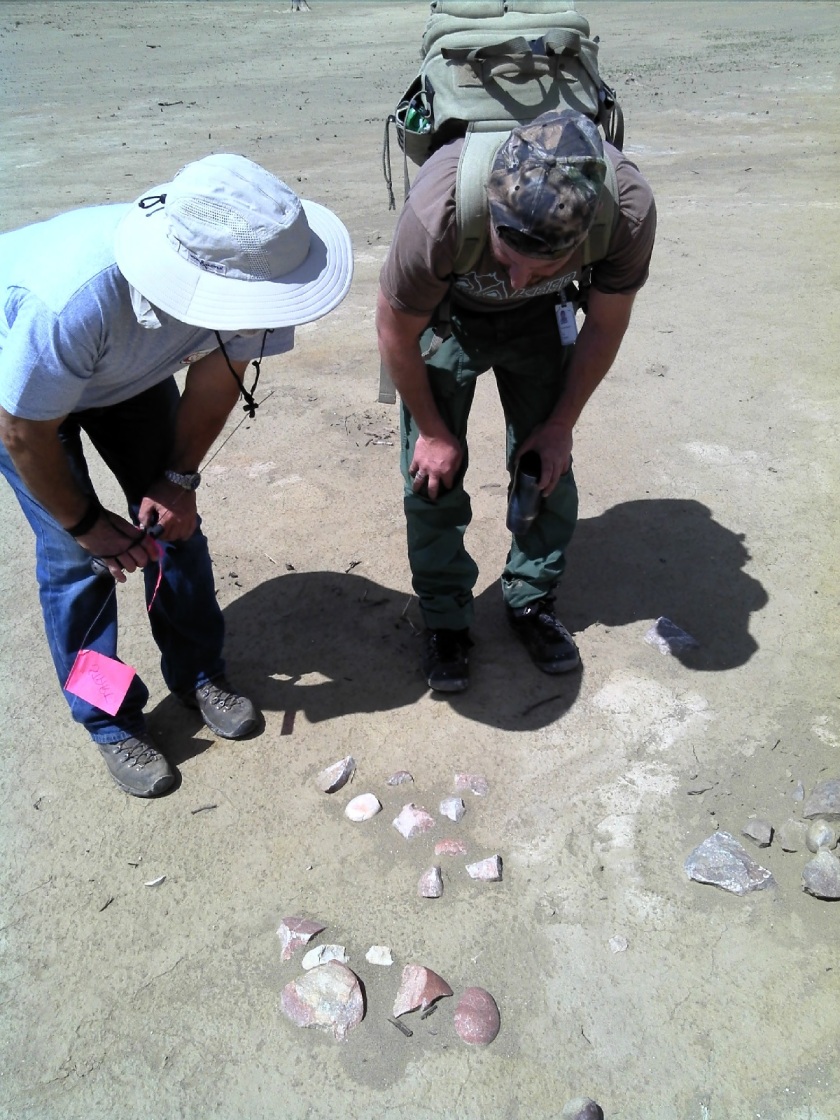
The project invites members of the Strathcona Archaeological Society (SAS) to come out for a day or weekend to learn survey and excavation techniques, as directed by experienced or professional archaeologists. As most of the artifacts lay exposed on the surface due to the ever changing water levels of the reservoir, the experience is relaxed, family friendly, and can be conducted over a single day or weekend, rather than a week-long commitment.
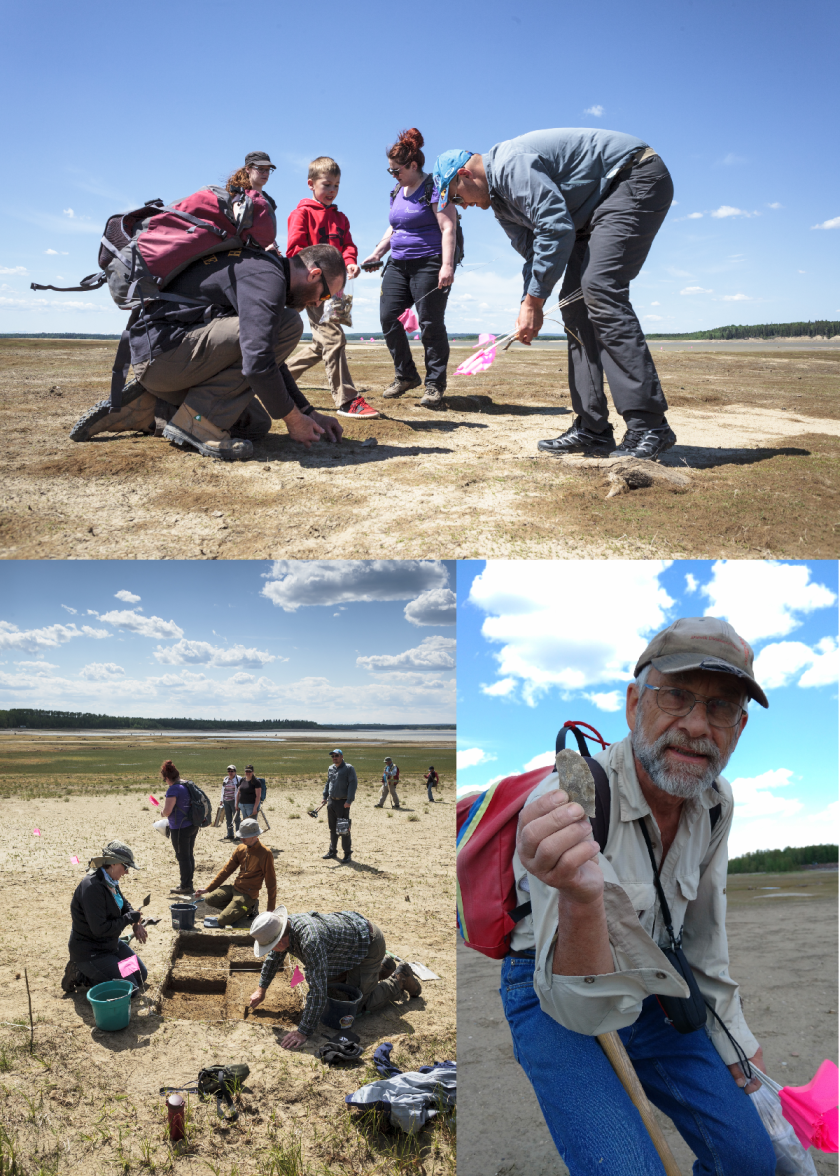
Participants learn what features to look for when looking for surface finds, such as material, shape, and modifications. By pairing participants up with experienced archaeologists we can point out the various ways an artifact, such a flake, can look; particularly how it can blend in or really stand out from its surrounding environment. For example, Amandah van Merlin, one of the co-ordinators, picked up a small, indistinct black pebble. The black pebble chert material, however, is a popular flint knapping material. As it turned out, Amandah had found a thumbnail scraper!
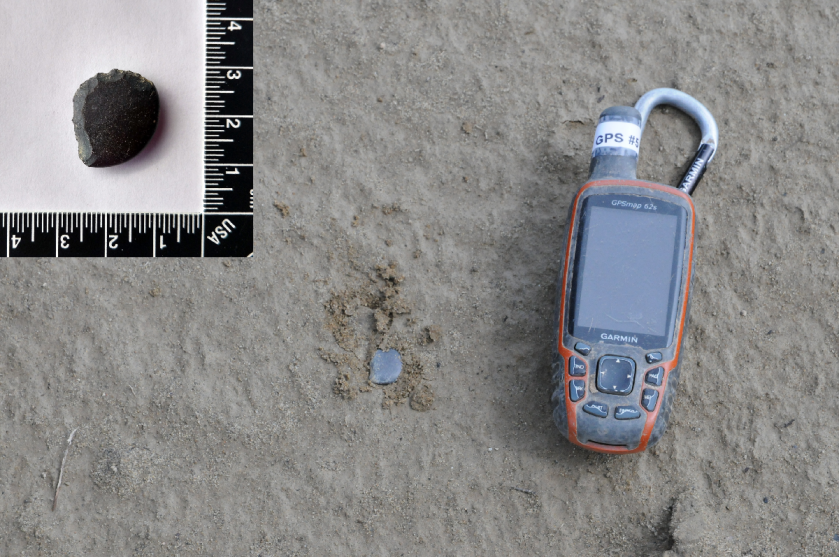
Public archaeology programs are also a great way to explore new technology or try experiments. One participant brought his drone. He was able to take photos from a bird’s-eye view of the site, providing a totally new perspective on what these landforms look like along the shore, and the distances between the sites. Madeline Coleman, the other co-ordinator, laid out various sizes of brick pieces in order to examine how artifacts are affected by water movement (or perhaps even people).
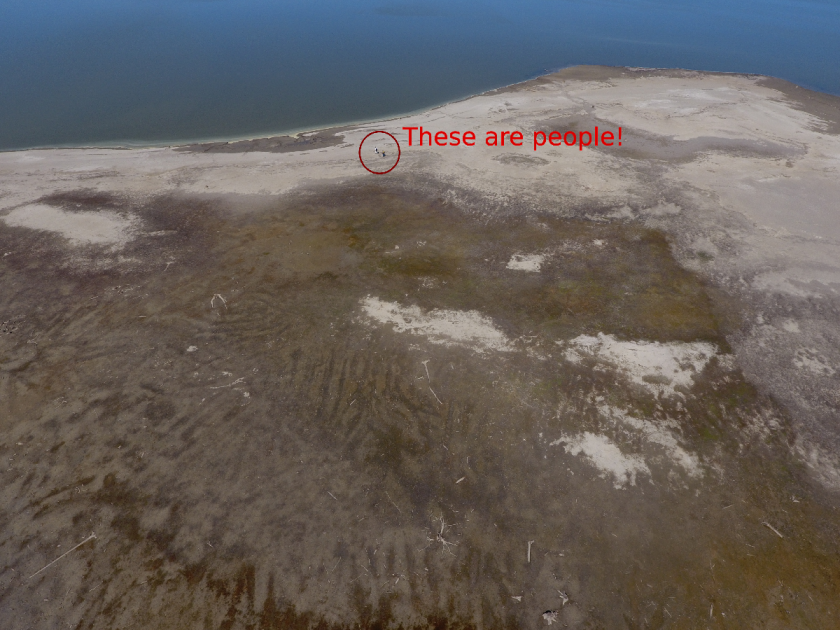
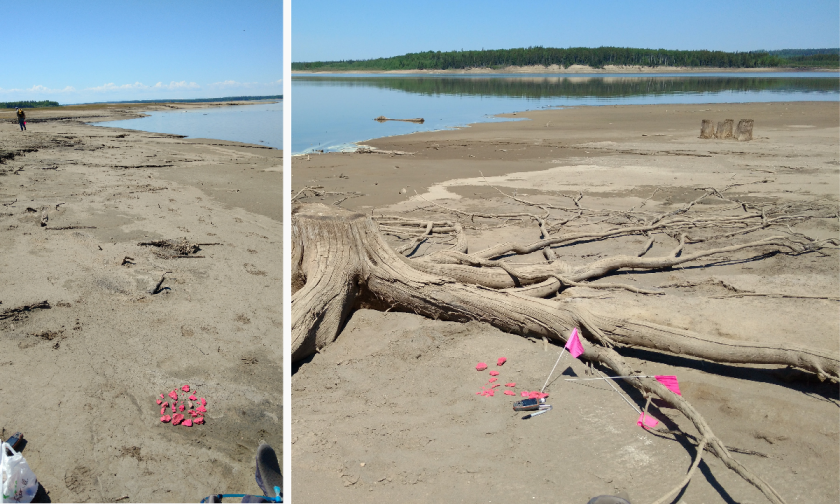
The project is still in its infancy. The pilot survey in May 2015 occurred over one day and had 9 participants. In May 2016, the survey occurred over two days with over thirty participants joining for one or both days. This past May, there were over 20 participants that joined for the full weekend. In addition, for two days prior to the public survey, BAP worked with University of Alberta field school students. Here they practiced map making, shovel testing, and laying out excavation units.
Outreach is also a very important aspect of a public program, such to First Nations group, schools, and universities. The BAP has recently reached out to Paul First Nation, in whose traditional territory the Brazeau River lies, and whom are active in working to protect their heritage. BAP has also recently partnered with Katie Biittner at Grant MacEwan University to begin a hands-on catalogue experience for university students at Grant MacEwan and the University of Alberta. In addition, the original finders of the site, Sandy and Tom Erikson, worked to create a 3-case display at their hometown school in Edson. The case shows some of the finds and information from the periods they may have originated in.
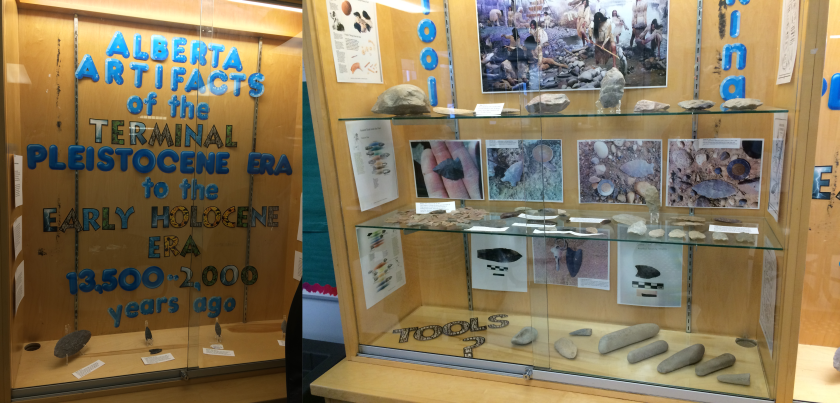
Core
A core is a larger piece of stone from which many smaller flakes are removed. These flakes are then turned into tools or are utilized as they are. There are many different types of cores, but a common way to describe them is by the direction(s) flakes were removed, or by the shape of the core. For example, unidirectional cores have flakes removed all in the same direction. That has had many stone flakes removed to make other tools.
Obsidian
Obsidian is commonly known as volcanic glass. It forms when a volcano erupts and the lava is cooled extremely quickly, such as when it flows into a water body. In Alberta obsidian is considered to be an “exotic material” because it does not occur here naturally. When we find it here it tells us that people in the past engaged in long distance trade, usually with people in British Columbia or the Yukon. In 2016 Teresa found this lovely obsidian flake at site FaPr-6 located near the community of Caroline.
Debitage / Flakes
Debitage, or flakes, are bits of stone chips that are left behind while making or modifying a stone tool. This artifact type has distinctive features that make them easily recognizable to archaeologists and clearly distinguish them from naturally occurring broken rocks.

